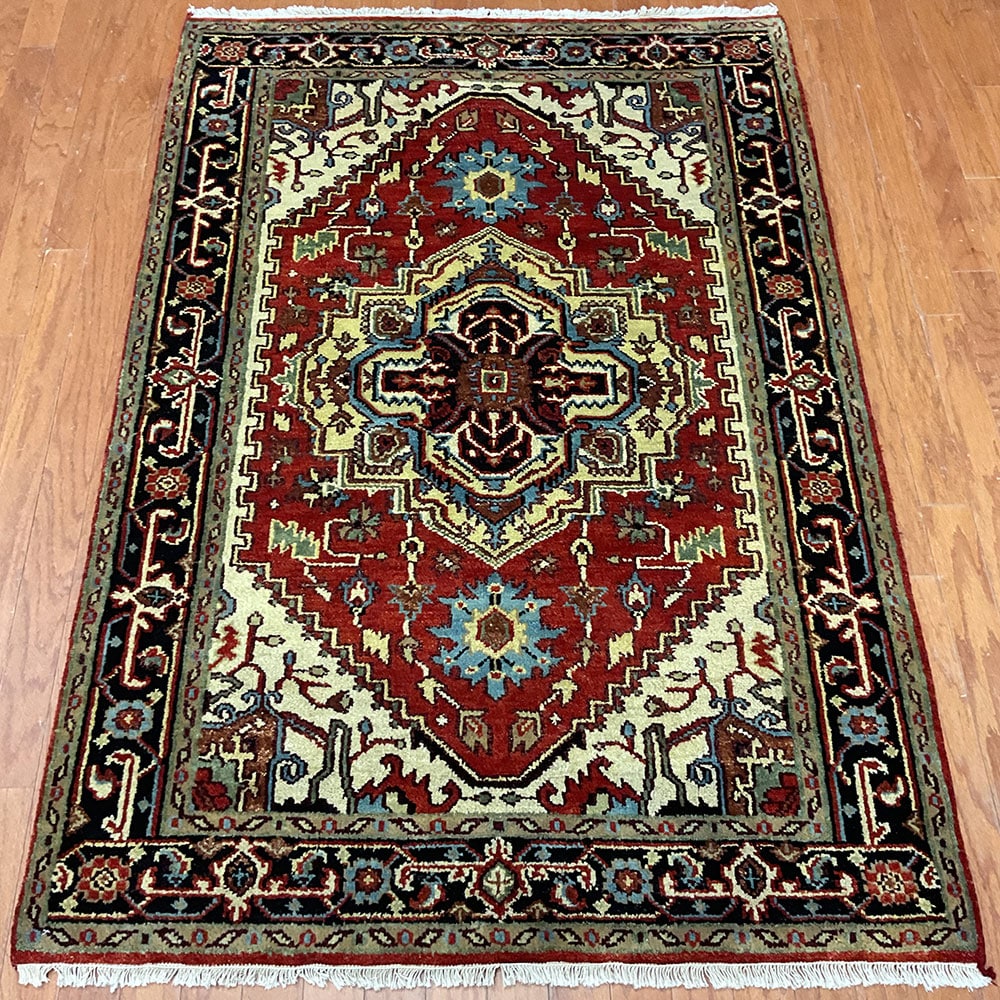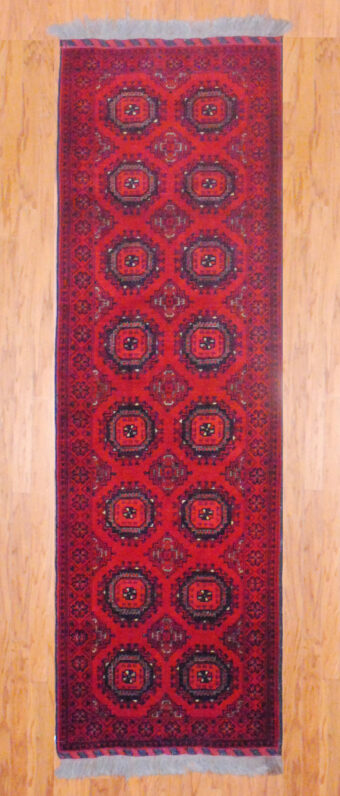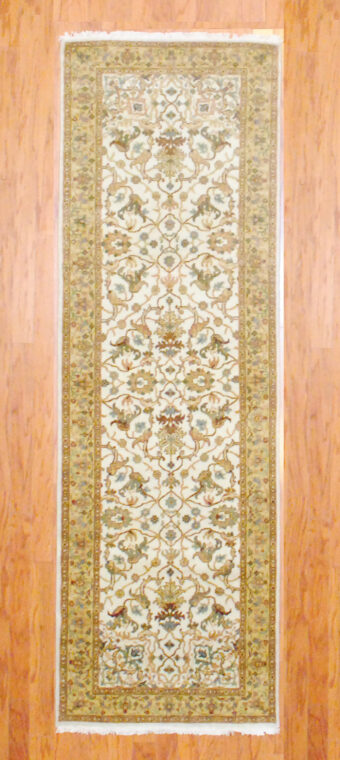Description
Serapi is a trade name given to better quality versions of Heriz rugs thought to have been woven before 1900. Heriz rugs are very famous with rug collectors today as they have their own unique style and are easily distinguishable from other rug styles. This particular rug is the Persian Serapi design but created with more up to date colors. This rug was made by Afghan refugees in the Pakistani camps. The weavers get their wool from local villages and they complete the entire process of cleaning and dyeing. The weavers no longer live in the camps and have moved back to Afghanistan after the fall of the Taliban government. Those vegetable dyes most commonly used are madder, the root of a spindly bush which grows abundantly in many carpet-producing area which is used to create a red color. Walnut peel is used for dark brown, pomegranate peel for light brown, and sparak which is a wild flower from the steppes, used for yellow.
Herat Oriental works with over 2,000 village weavers to create beautiful, authentic, handmade rugs. The majority of the weavers are women, who live in the villages of Afghanistan, Pakistan and India. As we grow, we are able to create more jobs for female weavers who otherwise would not have the opportunity to do so. The community also thrives from rug weaving as the local farmers benefit from wool sales, and the local artisans create natural and vegetable dyes for the weavers to use in their designs. Due to the handmade nature of our rugs, the size may vary from as advertised by 3-4 inches. Regular vacuuming and annual professional cleaning will keep your rug looking new for years to come.




